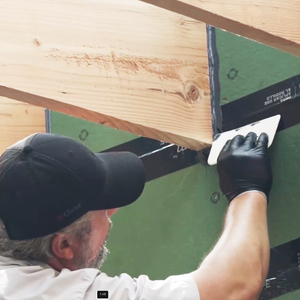Asbestos and HVAC installation?
Husband and I live in a 100-year-old bungalow with Zonolite vermiculite insulation — likely to contain asbestos — in the attic. We’re having it professionally remediated, in part so that the attic can become a usable space and we can install much-needed central AC. This morning, the asbestos contractor told me that, though they would guarantee removal of all asbestos in attic, it’s possible that we might have some in our walls — trickled down from the attic over the years — which they wouldn’t be able to access and remove.
My question is: if there’s asbestos in the walls, and we have ductwork installed, are we creating a situation where we’re just blowing asbestos into our house? Or, so long as everything is sealed up properly, post installation, will it be okay? Is this just pointlessly opening up a huge can of worms, and we should stick with window units?


















Replies
You should be able to have the HVAC installed without disturbing the walls. You likely can have all the ductwork installed in what is now the attic. What kind of heat is in the bungalow?
In general, asbestos that is sealed up is not a hazard. A good idea to seal up any penetrations, such as plumbing, electric switches and outlets.
Thanks for your reply. It's all radiator heat now, so no existing ductwork. And, it's a two story bungalow -- so while ductwork for the second floor will remain in the attic, to reach the first floor, something is going to have to come down the walls.
Not necessarily. Look into SpacePak & mini split type systems.
Good luck.
If you are concerned about asbestos in the walls, make sure to be up front with your HVAC installer. You probably will have to have the mitigation folks make a follow-up visit.
Asbestos within Air Conditioning and HVAC.
https://www.newcentralairconditioner.com/
Air conditioning systems and ductwork within buildings can contain asbestos whereby exposure to friable and respirable fibres may occur unknowingly. This may occur for many years until it may be found due to significant disturbance by HVAC or air conditioning tradesman through upgrades and refurbishments. The first tell-tale sign may be white dust which may contain visible fibres one morning when first arriving at work. Other times, the hidden asbestos may not be found until an asbestos assessor has identified that there may be potential for asbestos to be contained within the HVAC air conditioning system.
Where might the asbestos in the HVAC air conditioning system reside?
Asbestos was used widely for the thermal resistance properties which was a primary use and concern in HVAC air conditioning systems, particularly in the insulation surrounding the reheating banks or coils throughout the ductwork. During the winter as warm air is being distributed throughout the building, it will cool down; to prevent this, re-heating bars or coils similar to an old electric bar heater are located throughout to re heat the air and reduce the thermal inefficiency of the system It is within these sections of reheating bars, that may contain a low density asbestos material called millboard.
The millboard material surrounding the heating banks will over time start to deteriorate and release and liberate the material, including the asbestos fibres into the air stream. This may then expose people over time whilst they are occupying the building. Identification of asbestos within the ductwork can be done by a visual inspection of the heater banks and a sample of the material sent to a NATA accredited lab for asbestos testing. Sampling of the duct through scarping up the dust under controlled procedures by an asbestos assessor or using tape samples is most appropriate, depending on the amount of dust present that may be able to be sampled.
This detection limit for asbestos concentration is some 10 times less than the exposure standard for asbestos, and the low level exposure is generally not a major health hazard until there is significant disturbance.
Significant disturbance of the asbestos in the air conditioning system may result from cleaning of the ductwork or HAVC & air conditioning tradesman cutting into the ductwork that contains the asbestos mill board material. This potential exposure is a concern not only for the people within the building, but more so the HVAC and air conditioning tradesman who may themselves be subject to asbestos exposure on a daily basis.
The most common form of asbestos identified within millboard surrounding the heater banks is chrysotile asbestos commonly known as white asbestos. Amosite asbestos has also been found, more commonly where there has been a sprayed applied limpet asbestos within air conditioning plenums and ceiling voids where the asbestos is transported through at velocity.
What precautions should be taken?
Firstly both an asbestos inspection of the building should be undertaken with the asbestos register present and available for all people within a building and those tradesman including HVAC and air conditioning consultants being able to have access to this information. If there is not any information relating to the potential for asbestos within the air conditioning system then an inspection of the heater banks and ductwork including dust and insulation samples be undertaken.
In many instances dust within the ducts can contain asbestos, particularly at the elbow joints where the particles impact against the ducting and fall down due to the inadequate transport velocity at the sharp bends in the duct work.
Where asbestos is found within the building, an asbestos management plan should outline emergency procedures, what to do and who to contact, along with a risk assessment, asbestos air monitoring plan and asbestos sampling procedures.